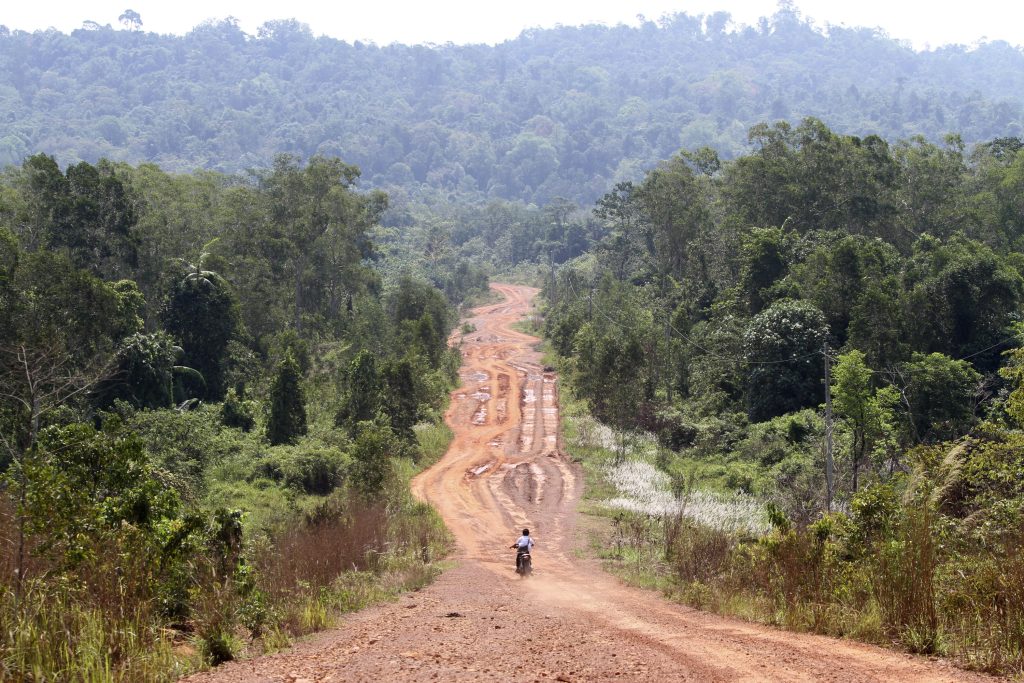Cambodia aims to become an upper middle-income country by 2030 and a high-income country by 2050. To realise these ambitions, Cambodia must address various constraints to achieving more inclusive, sustainable and resilient growth. Growth will need to be driven by, and generate, decent paying and sustainable jobs in the formal and informal sectors. This includes decent returns for small-scale farmers and micro, small and medium enterprises (MSMEs).
To do this Cambodia needs to enter a new phase of structural transformation. So far, the limited diversification of its economy has not affected its rapid pace of growth — only its quality and inclusiveness. Cambodia’s average growth rate exceeded 7 per cent in the decade prior to the COVID-19 pandemic, driven by unilateral trade preferences, tourism centred on Angkor Wat and large capital inflows to infrastructure and real estate.
With its graduation from least developed country status expected this decade, Cambodia will become a victim of its own success as trade preferences and aid flows diminish. It will need to pursue new drivers of growth, which will require a new type of diversification.
Cambodia’s initial phase of structural transformation involving rural–urban migration from agriculture into industry and services may be reaching its limit. The horizontal shift into sectors producing higher-value products and services generated a one-off increase in productivity that raised incomes and living standards, but this increase is not sustainable.
Future increases in Cambodia’s productivity will have to come from intra-sectoral diversification. This involves a vertical shift into higher value-added products and activities within each sector.
Cambodia must address two sets of constraints to enable greater intra-sectoral diversification for more inclusive growth. These are its limited human capital and the high cost of doing business. For this new type of growth to continue, Cambodia must also address constraints that limit resilience and sustainability. Policy reforms and public and private investment are required to address these constraints.
There is an urgent need to improve the quality of primary and secondary schooling. Technical and vocational training and tertiary education can succeed only if students have a strong foundation. The World Economic Forum’s Executive Opinion Survey ranked Cambodia 100th out of 130 countries for quality of primary education in 2017. This needs to be accompanied by measures to improve access and retention rates, which are currently low.
With a stronger foundation, vocational and tertiary education can succeed if they align their curriculums more closely with the needs of the private sector. This foundation is required before Cambodia can focus on science and engineering at the tertiary level, a process that has borne fruit in Vietnam.
For companies, the high cost of doing business in Cambodia stems from limited physical and logistics infrastructure and expensive energy and finance. With widespread infrastructure deficits, Cambodia needs to prioritise investment in the transportation sector. For instance, upgrading rural roads should take priority over high-speed rail links.
The high cost of electricity limits vertical upgrades from labour-intensive assembly activities to higher value-added and energy-intensive production of components in electronics and automotive supply chains. Cambodia needs to invest in renewable energy and energy efficiency to reduce costs and reliance on coal and oil in electricity generation.
The high cost of finance, especially for small-scale farmers and MSMEs, perpetuates poverty. Their limited access to formal avenues of finance raises costs. The potential for digital innovation, including in fintech and blockchain technology, presents significant opportunities for Cambodia’s financial sector to enhance financial inclusion.
Cambodia should also increase its versatility in managing and responding to shocks and improve its capacity to ensure sustainable growth.
Climate change threatens the livelihoods of millions, especially poor and vulnerable rural communities reliant on agriculture. The Asian Development Bank estimates that Cambodia’s GDP could be 10 per cent lower in 2050 due to lost labour productivity from climate change.
Economic growth and environmental protection are often considered trade-offs, but there can be complementarity. The intersection between the two is green growth, which fosters ecologically sustainable economic growth with low carbon emissions and socially inclusive development. Reducing deforestation and adopting more sustainable agricultural and fishing practices will be critical to protecting Cambodia’s environment and ensuring the prospects of these industries.
Cambodia also needs to reduce the risk of shocks emanating from its financial sector following the proliferation of banks, non-bank financial institutions and shadow banking. Resilience is enhanced by improved regulatory and supervisory frameworks, asset quality and risk management practices.
Government spending on healthcare must be significantly increased. Cambodia has 0.7 hospital beds per 1000 people, compared to 2.1 and 2.6 in Thailand and Vietnam respectively. This was a major limitation for Cambodia in managing the COVID-19 pandemic, as it necessitated more stringent mobility restrictions than countries with more robust healthcare systems.
Cambodia’s acceleration towards a digital economy will produce many benefits but will also create new challenges. Many low- and medium-skilled jobs may initially be lost. Redeploying displaced workers will require substantive reskilling and retraining.
While the COVID-19 pandemic may have dashed Cambodia’s hopes of realising its vision of upper middle-income status by 2030, addressing constraints to inclusive, resilient, and sustainable growth is critical. This may involve a lower rate of growth, but the journey is as important as the destination as it will be shaped by it.
Jayant Menon is Senior Fellow at the ISEAS-Yusof Ishak Institute.
A version of this article was first published here in Fulcrum.

